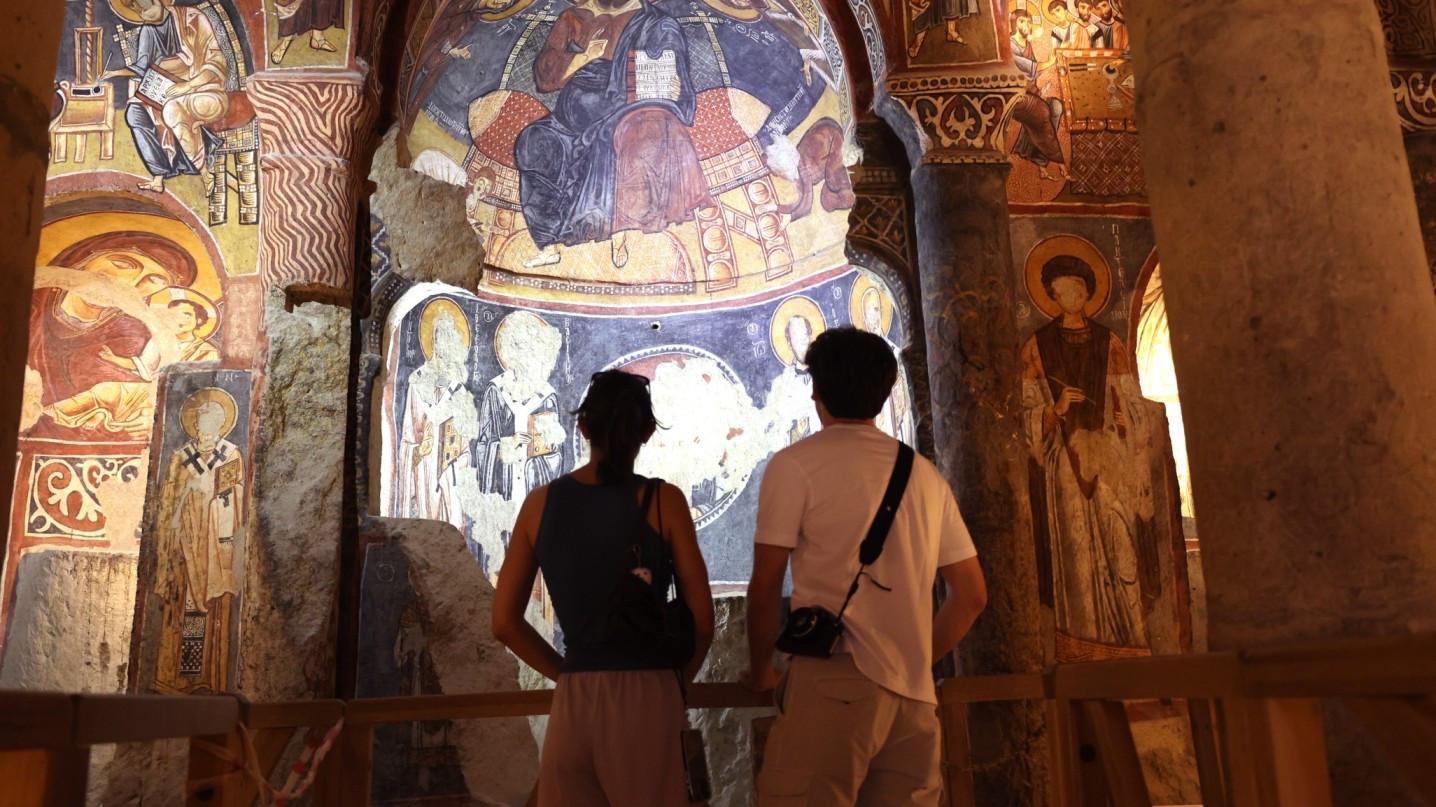
More than 1 million people have visited the Karanlık Kilise (Dark Church), a centuries-old rock-cut church known for its vivid frescoes, over the past 10 years in Türkiye’s Cappadocia region, official data shows.
Located inside the UNESCO-listed Göreme Open-Air Museum, the Dark Church stands out with its remarkably well-preserved frescoes depicting scenes from the Bible and Torah, painted in the late 11th century.
After remaining closed for many years, the church was reopened to the public in 1990 following extensive restoration. Its frescoes portray iconic moments such as the Nativity, the Journey to Bethlehem, the Baptism of Christ, the Raising of Lazarus, the Entry into Jerusalem, the Adoration of the Magi, the Last Supper, and the Crucifixion.
Carved into soft volcanic rock in the shape of a cross, the church consists of a central dome, four columns and three apses.
According to the Nevşehir Provincial Directorate of Culture and Tourism, the church welcomed 58,120 visitors in 2016, 59,091 in 2017, 116,659 in 2018, 120,908 in 2019, 33,209 in 2020, 63,323 in 2021, 172,168 in 2022, 163,941 in 2023, 156,534 in 2024, and 92,644 in the first seven months of this year, bringing the total number of visitors to 1,036,597.
Özay Onur, head of the Nevşehir Chamber of Tourist Guides, told the state-run Anadolu Agency that the church is believed to have been intricately carved into the rock using metal tools centuries ago.
“The Dark Church is like a time capsule from the 12th century,” he said. “It was cleaned and restored between 1980 and 1990. Because it remained hidden for so long, the frescoes were naturally preserved. Visitors can follow the biblical story in chronological order through the scenes. The central dome is painted with prophets and depictions of Jesus Christ.”
Onur emphasized that the church, considered the most significant structure in the Göreme Open-Air Museum, deserves its separate entrance due to the exceptional quality of its frescoes.
“Preserving this cultural heritage is not only the responsibility of museum officials but of all humanity,” he said.
Tourists captivated by the church’s atmosphere
Foreign visitors have also expressed their admiration for the site. Martha Caruso, a tourist from abroad, said she was unaware of the church’s existence before coming to Cappadocia.
“The frescoes are stunning. The scenes are vivid and very well-preserved. I was deeply impressed by the historical atmosphere of the Dark Church,” she said.
Another visitor, Semon Sacco, noted the unique character of historical structures in the region.
“The colors and details of the frescoes are remarkable,” he said. “Seeing how people lived and built such places in the past is truly moving.”